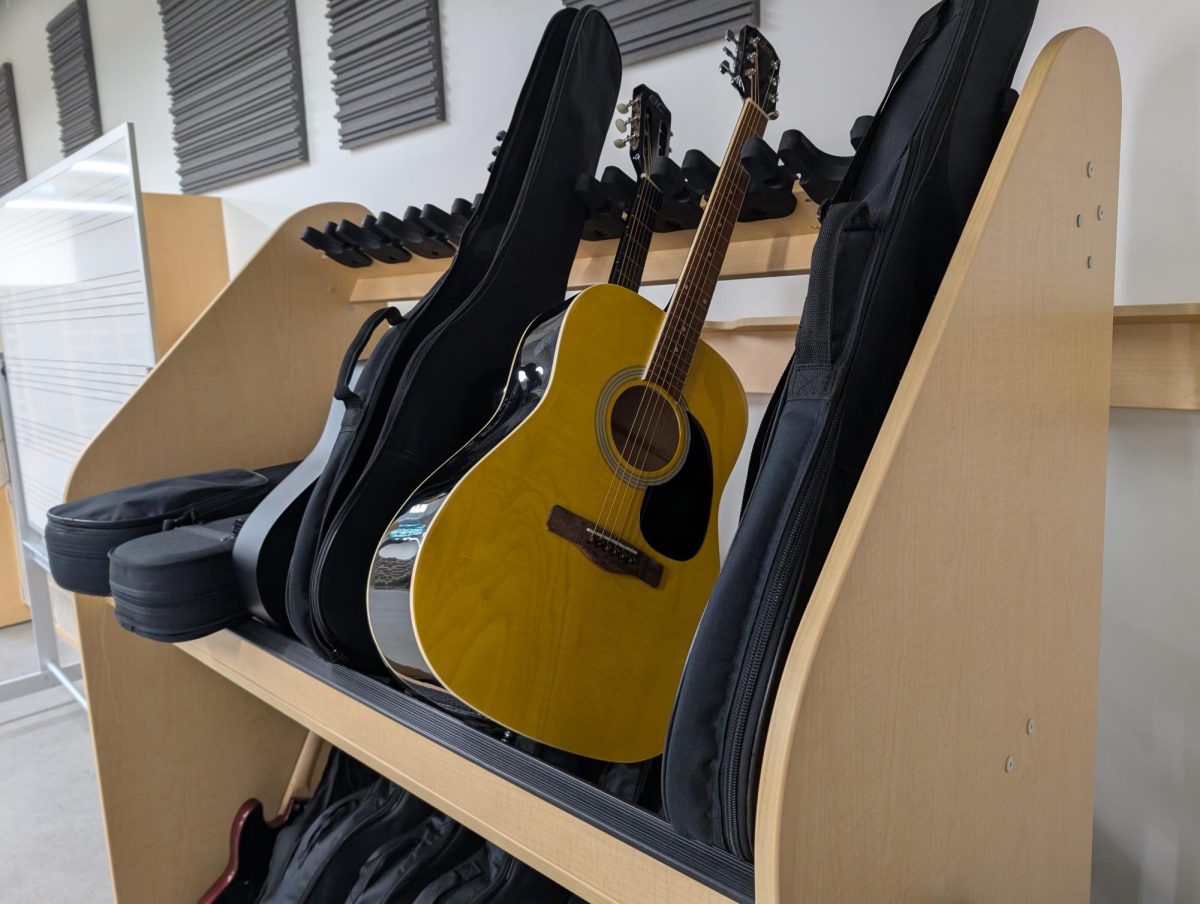For the past year, the whispers of budget cuts have been lingering in the air at Benson. And with those whispers have come a myriad of questions, causing stress amongst staff and students alike. What will happen to our programs? Will any staff members be let go? Fortunately, we had the opportunity to speak with our principal, Mr. Wilson, on how budget cuts will affect Benson.
Thankfully, Benson may not be at as much of a risk as originally assumed. Because of our move to our modernized campus, Benson has received a significant influx in enrollment. Wilson shares that, “One of the things that helped out Benson was our enrollment, our numbers went up. And so the other high schools and other schools within the district, we all have to make some sort of sacrifices. If we didn’t have the influx of students, I would probably have to let go of about six or seven teachers this year.”
Our modernization has caused an increase in students. According to Mr. Wilson, we’re back to over a thousand after being below nine-hundred at Marshall. Due to that major increase, our funding should remain normal. Allowing staff and programs to remain consistent.
Benson is also fortunate enough to, not only keep its current staff, but grow it as well. As other schools experience layoffs, our spots remain open as our student body increases, allowing those teachers to work at Benson. Benson had around five or six openings. According to Wilson, we have an extra hundred thirty-three new students coming in next year. For every thirty students, you can hire another teacher.
However, even though Benson has the privilege of remaining fairly normal, other schools still suffer the effects of budget cuts, and Benson’s staff increases cannot account for all jobs lost around the district. “Now, if those teachers that have been reassigned cannot land a job anywhere in the district, then what could happen is it could go into what’s called layoffs. And so then that means that if I was a math teacher at ‘XYZ’ school. My principal came in and said, ‘you’ve been reassigned, so we have to let you go.’ Hopefully, you’re gonna land at another school, maybe at Benson. Benson’s hiring, right? And so you don’t get a job at Benson because it’s too late.”
The decisions for these reassignments are based on seniority. For example, a math teacher that has been working for ten years has a higher chance of keeping their position than someone who had only recently been employed.
This of course, raises the concern of the effect on less fortunate schools, especially those without major means of fundraising. “Lincoln and Grant can fundraise a lot, and so by that, they were able to fundraise in what was called a foundation. So they would go to their neighborhoods, ask for help, people would write big checks, that money would go into a pot, and then the principal could use that pot to hire more teachers. At a school like Jefferson or Benson, where we don’t have major resources, we don’t have a pot that’s full of money and we can pull out and hire.” This inequity has led to the district putting a cap on just how much a school can fundraise, the rest going back to the district to fill a pot that is distributed to schools throughout the district.
Although staff cuts are of major concern, there’s also the worry of cuts affecting our access to supplies. “I have my own budget that I use for running the school. It’s called the consolidated budget. And so the district gives me a number, and that number is used to run the school. Now, the number is never enough, ever, because it takes a lot to run the school. Think about it, like, for example, supplies for classes, right? Paper, Kleenex, pencils, things that teachers need to run the school. The district is supposed to pick that tab up, but I buy almost everything else that a class needs, and there isn’t enough money for that. So what I gotta do is I have to be very specific and strategic as to how I distribute money to the staff.”
While mention of our budget only ever seems to bring bad news, there is some good that comes with it. By the 2026-2027 school year, music may be back at Benson. “Our plan right now is to bring back music in some form or capacity next year. We got to bring back choir…because as long as our numbers keep going up, we can do more things with extra money. And so one of my priorities for next year is to look at how to bring back music.”
Choir doesn’t require as much money to start up as a full, concert band, with the instruments costing around $300,000 dollars. “So, people think the district just has all these instruments just sitting in some warehouse and they don’t. They don’t. When Benson canceled music in the 80s, all those instruments were throughout the whole district. So they’re gone. They’ll never come back. So now what we have to do is find a way to bring back music without spending $300,000 dollars.”
Overall, it may seem like Benson is in pretty good shape. Even so, Benson isn’t completely out of troubled waters just yet. Wilson shared that, next year, the district will once again be in a thirty-million dollar shortfall. As long as Benson’s numbers keep increasing, it shouldn’t be too much of an issue. However, as our enrollment begins to level out, we’ll be at the same risk as other schools.
The outcome of our budget cuts ultimately relies on the state, due to statewide educational cuts. Because of this, many students have begun to fight back, with organizations like PPS’s District Student Council organizing lobbying days to gain back funding, and campaigning for the passing of bonds.
Throughout all of this, remember that your voice matters. That there is always a way to challenge struggles like these.




